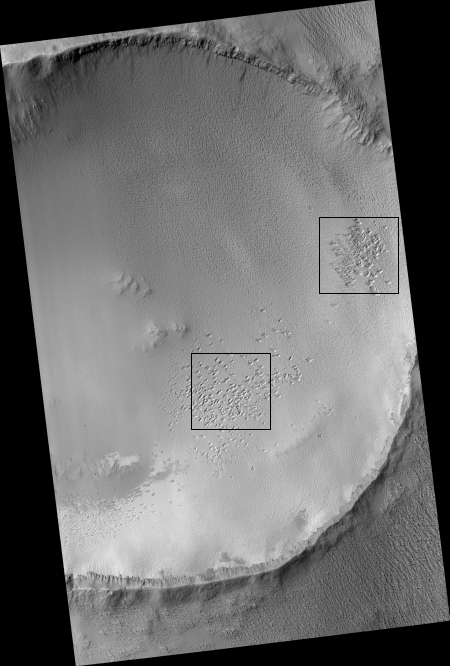A spray of volcanic ejecta on Mars?
Time for some more weird Mars geology! Today the science team for the high resolution camera on Mars Reconnaissance Orbiter released its monthly batch of new images. There is a lot of interesting stuff buried therein, some of which I will feature periodically in the next month.
The image on the right, reduced in resolution to post here, is a good example. (If you click on the image you can see the full resolution version.) It shows a scattering of pits in three specific areas on the crater floor, all in a line going from the northeast to the southwest. Yet, the rest of the crater floor lacks similar pits, and is either very smooth or has a mottled appearance. Both the smooth and the mottled areas appear to have a very faint trend going from the northwest to the southeast, which to my eye appears caused by the general wind direction that flows across the crater floor.
Even more intriguing, the pits in these three areas appear to be mostly oblong and also trend from the northeast to the southwest, cutting across the general trend of the rest of the crater floor. You can see this in the cropped closeups from the full resolution image below, showing the two boxed areas indicated on the image on the right.
» Read more



